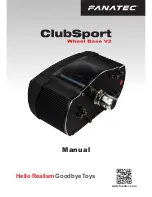
AFMNA0AA – EPS-BLI HYG – User Manual
Page – 49/75
These response PDOs includes the STOP TRACTION REQUEST bit.
The time repetition for this (synch) PDO TMC
EPS_MuC_SuC MUST BE
EQUAL OR LOWER THAN 20 ms.
TMC
EPS_MuC_SuC: Every Tr
≤
32 ms
EPS_MuC
TMC: MuC STOP TRACTION REQUEST
EPS_SuC
TMC: SuC STOP TRACTION REQUEST
The job of the Zapi steering system finishes when the STOP TRACTION REQUEST
has been sent to the TMC. The position of the STOP TRACTION REQUEST flag is
given by table 10.1-1 below.
TCM
EPS
ID.Byte.Bit
EPS_MuC
TCM
STOP TRACTION REQ
ID.Byte.Bit
EPS_SuC
TCM
STOP TRACTION REQ
ID.Byte.Bit
Expected Time
repetition
388.X.X 398.0.0 399.0.0
every TCM
EPS
(T = around 16 ms)
Table 10.1-1
Together with the STOP TRACTION REQUEST the E-steering motor controller sends
also an EMERGENCY or a PDO with the indication of the alarm code.
BUT THIS IS
ONLY an information aside; it is mandatory that the traction shall be stopped
following the event STOP TRACTION REQUEST turned TRUE.
10.2 Alarm list
As well as leading the traction to a safe state, any alarm in the E-steering motor
controller must bring the steering system to a safe state.
Alarms
E-steering motor controller alarms are organized in four groups identified by the action
taken on the steering system in case of an alarm detection.
Group #0:
Steering motor is immediately shut off (null holding torque).
Traction is immediately commanded to a safe state.
Group #1:
Traction is immediately commanded to a safe state. Steering
motor is driven to a null speed 5 s long, after traction has
stopped. Then steering motor is shut off.
Group #2:
Equivalent to Group #1.
Group #3:
Traction is immediately commanded to a safe state. Steering
motor is kept in full control 5 sec long before to shut it off.
Group #4:
No action is taken.
Warnings
Together with the alarms also a warning event is handled. Typically a warning is raised
for a special or a restricted operating mode (not for the detection of a failure). When a
warning occurs, the steering system stays fully operative (if it is possible) but the
traction is immediately invoked to a safe state.
Node #24 is the Master Microcontroller (MuC)
Node #25 is the Slave Microcontroller (supervisor-SuC).
In square brackets the nodes rising the alarm are reported (M = master microcontroller;
S = slave microcontroller).
Master and slave microcontrollers reply the same tests on the system for mostly of the
















































